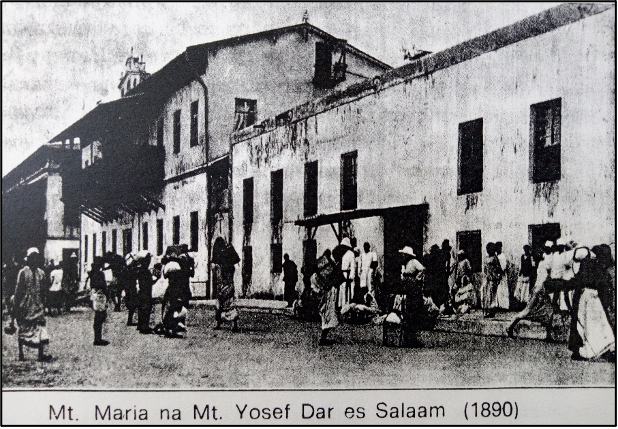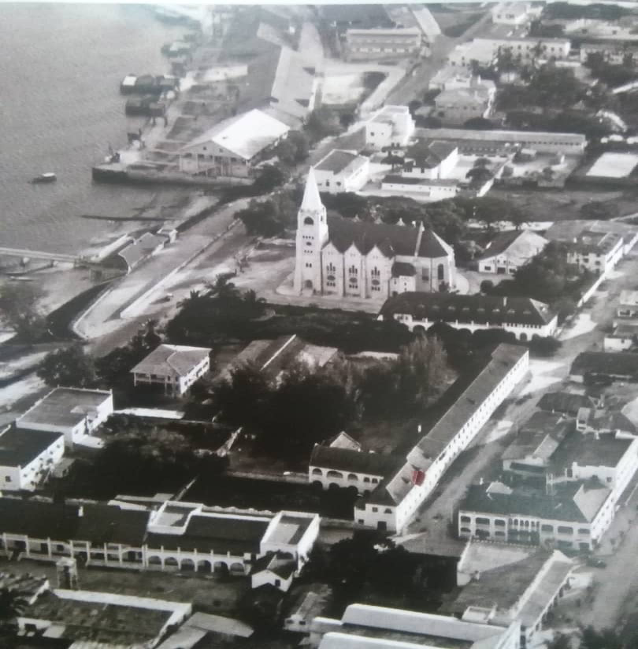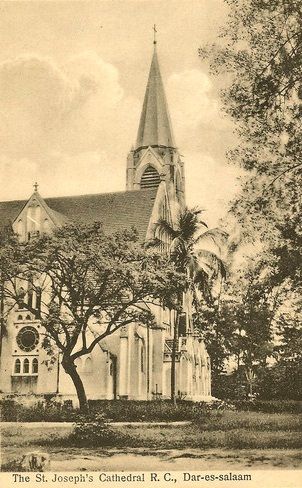History of our Cathedral, St. Joseph
St. Joseph’s Cathedral, the mother church of the Catholic Archdiocese of Dar es Salaam, traces its origins to the late 19th century during German colonial rule. The Benedictine missionaries from St. Ottilien Abbey in Germany, who were evangelizing German East Africa (now Tanzania), established the first Catholic mission in Dar es Salaam.
1. Foundation and Early Years (1897–1902)
-
1897: German Benedictine missionaries build a temporary chapel near the current site.
-
1902: With the establishment of the Apostolic Vicariate of Dar es Salaam, plans for a permanent cathedral begin.
-
1903-1905: The cathedral is constructed in neo-Gothic style under Bishop Adolph Lechler, using coral stone and German architectural influences.
-
1905: Consecration of the cathedral, dedicated to St. Joseph, patron saint of workers.
2. Construction of the Cathedral (1902–1905)
The current neo-Gothic cathedral was built under the leadership of Bishop Adolph Lechler, the first Vicar Apostolic.
-
Architectural Style: Designed in European Gothic Revival style, with pointed arches, stained-glass windows, and a tall spire.
-
Materials: Built using coral stone and cement, reflecting the coastal Swahili architecture.
-
Completion: Consecrated in 1905 and dedicated to St. Joseph, the patron saint of workers and the Universal Church.
3. Role During Colonial and Post-Colonial Eras
-
German Rule (1905–1916): The cathedral served as the spiritual center for European settlers and local converts.
-
British Rule (1916–1961): The church continued to grow, with mission schools and hospitals established nearby.
-
Post-Independence (1961–Present): After Tanzania’s independence, the cathedral became a national symbol of faith, hosting major religious and state events.
4. Notable Historical Events
-
1914-1918 (WWI): The cathedral serves as a refuge during the British-German conflict in East Africa.
-
1961: Hosts independence celebrations as Tanganyika gains freedom from British rule.
-
1968: Cardinal Laurean Rugambwa, Tanzania’s first cardinal, is installed here.
-
1990 (Sept 1-4): Pope John Paul II visits the cathedral during his Tanzanian apostolic journey, drawing massive crowds.
-
2017: Pope Francis includes Dar es Salaam in his Africa tour, though he celebrates Mass at Mnazi Mmoja grounds, the cathedral remains a focal point.
-
2019: Installation Mass of Archbishop Jude Thadaeus Ruwa’ichi, the current archbishop.
5. Architectural Evolution & Features
Original Design (1905)
-
Neo-Gothic style (pointed arches, ribbed vaults, tall spire).
-
Coral stone walls – a blend of European design and Swahili coastal materials.
-
Stained-glass windows depicting biblical scenes (imported from Germany).
Major Renovations & Expansions
-
1930s: Addition of side altars dedicated to the Virgin Mary and St. Benedict.
-
1950s: Reinforcement of the bell tower and installation of a new pipe organ.
-
1970s: Vatican II reforms lead to modifications in the sanctuary (new altar facing the congregation).
-
1990s: Restoration of stained-glass windows and exterior stonework.
-
2010s: Structural repairs due to coastal weathering; modern electrical and sound systems installed.
Key Architectural Features Today
-
Bell Tower: A landmark of Dar es Salaam’s skyline.
-
Main Altar: A mix of marble and Tanzanian motifs, post-Vatican II.
-
Stations of the Cross: Hand-carved wooden reliefs by local artisans.
-
Courtyard & Gardens: Added in the 1980s for open-air gatherings.
6. Present-Day Significance
-
Seat of the Archdiocese: The cathedral remains the official church of the Archbishop of Dar es Salaam.
-
Pilgrimage Site: A key destination for Catholics, especially on St. Joseph’s Feast Day (March 19).
-
Cultural Heritage: Recognized as one of Dar es Salaam’s oldest and most iconic landmarks.
For over 120 years, St. Joseph’s Cathedral has stood as a testament to faith, resilience, and cultural unity in Tanzania. From its German missionary roots to its role in modern Tanzanian Catholicism, it remains a spiritual and historical treasure.
Pope John Paul II’s First Visit (September 1990)
“Be Strong in Faith!”
-
Dates: September 1–4, 1990
-
Cities Visited: Dar es Salaam, Dodoma, Zanzibar, and Mbeya
-
Key Events:
-
Mass at St. Joseph’s Cathedral (Dar es Salaam) – Emphasized reconciliation and unity in post-colonial Tanzania.
-
Beatification of Blessed Irene Stefani (Nyaatha) – An Italian Consolata Missionary Sister known for her service in Tanzania and Kenya.
-
Meeting with President Ali Hassan Mwinyi – Discussed social justice, peace, and interfaith harmony.
-
Visit to Zanzibar – First pope to set foot on the island, promoting Christian-Muslim dialogue.
-
Memorable Moment
John Paul II famously said:
“Tanzania, remain faithful to your Christian roots! Be strong in faith, hope, and love!”














